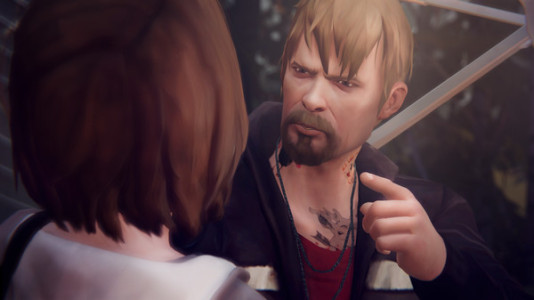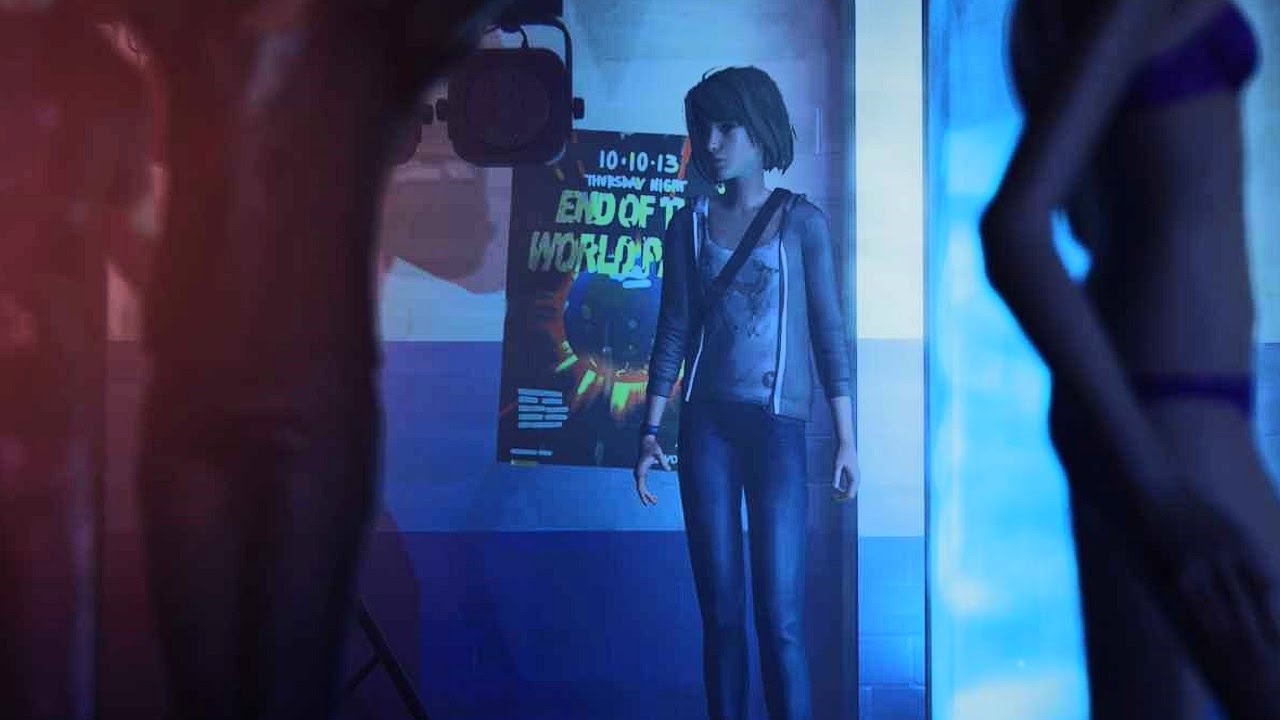While my usual praise is that my return to Arcadia Bay is filled with the familiar, sadly, The Dark Room is not. Episode 4 of this 5 part series brought me back to a timeline that I did not want, and desperately wanted to break from. In the latest episode of life is strange, developer dontnod drags us into depths darker than anything we could have imagined for this title. A game that has so far blanketed us with the warm and familiar will rip away everything we have come to know and love, leaving us helplessly sputtering, trying to change things for the better.
Max Caulfield, the time traveling high school senior is still on the hunt for Rachel amber, the young student who has been missing. But before she can continue on her hunt, she must save her best friend Chloe Price, from a fate possibly worse than death. This fallout left over from last episode’s cliffhanger, sets a pace of extreme urgency, which makes this installment wildly different from its predecessors.
Where the past few episodes have allowed me to indulge in my more nosy tendencies, examining objects, digging through every character’s pasts and personal lives, I found myself not wanting to do that. The extremely heavy themes present in the games narrative push players to act quickly, ignoring the beautifully imagined worlds and lives around you. You will find yourself opting for swift action over slow and methodical gameplay, which may hurt this episode in the end. It is an odd decision for a game so heavily reliant on slowly sifting through its many clickables for tidbits of backstory.
One thing that DONTNOD has skillfully achieved is a strong bond between the main cast of characters, which in turn elicits an emotional response from the player. Charming visuals and masterfully pieced together soundtracks aside, the characters in Life is Strange are shining stars from a design standpoint. Life is Strange is not simply a game about a teenager literally trying to save the world through time travel. Life is Strange is a tale about children given the responsibilities of adults, while still only having the tools childhood has given them. It portrays sheltered children finding out just how unfair the actual world can be. While at times, minor characters can fall into teenaged stereotypes and tv tropes, DONTNOD still seems to understand and appreciate the hardships their characters endure during their formative years of young adulthood.
Artistic style is kept intact, as the warm and color rich world of Arcadia Bay continues to unfold in front of players. This cartoon-esque yet still somewhat realistic look is complimented as always by the game’s musical score. At moments of calm the music and scenery will give players a sense of calm and reassurance, but DONTNOD is just as masterful at taking this feeling away when the soft guitar music is replaced by anxiety inducing sound, and haunting visuals.
Another commendable decision on the part of developers are a host of new game mechanics built into the game’s narrative. With the games story coming to a head, players must piece together information they have accrued over past episodes and begin to piece things together. These super sleuth segments can be mildly challenging, and even though they aren’t that difficult, they still deliver satisfying “Aha!” moments. But while some new mechanics bring fresh gameplay, some old mechanics falter a bit.

In games with multiple conversation paths, at times we see the strings behind the curtain. Using Max’s time travel abilities, it is easy to turn back a conversation and choose the right things to say to NPC’s. But after a few confrontations whose outcome is heavily contingent on your conversational choices, these strings become more and more obvious. You begin to see that at times, conversations don’t vary as much as you’d like them to, or even worse they become inconsistent. For example, one such conversation involves speaking to a very angry NPC, and the player’s goal is to de-escalate the situation, and come away with some information from said NPC. After failing and turning back time multiple times, I found just how few answers were “right” and at times, the flow of conversation didn’t even make sense. Conversational puzzles such as these were present in previous episodes, but don’t seem as polished here.
Life is Strange: The Dark Room will leave you with goosebumps. An episode teeming with odd decisions and minor hiccups is still held strong by the overarching narrative and unshakeable bond between its cast. If you have yet to dive into this series, do yourself a favor and give it a try. For those of you who have kept up with this wonderful series, episode four will not disappoint, even if it does leave you an emotional mess.


